1 What are LLM Agents and Multi-Agent Systems?
Large language models are excellent at articulating plans in natural language, but they cannot execute those plans on their own. LLM agents fill this gap by turning an LLM’s intentions into actions through coordinated tool use, enabling end-to-end task completion. These systems already power applications such as report generation, web and deep research, retrieval-augmented generation, software development support, and computer-use automation. When tasks grow complex, multi-agent systems combine specialized agents to collaborate on decomposed subtasks, often improving quality and efficiency over a single general-purpose agent.
Under the hood, an LLM agent pairs a backbone LLM with tools and relies on two prerequisite capabilities: planning and tool-calling. The agent runs a processing loop that repeatedly plans next steps, selects and invokes tools with structured requests, and synthesizes results before adapting the plan. Captured “trajectories” of plans, tool calls, and outcomes aid analysis and debugging. Effectiveness is further improved with patterns like memory (to reuse past results and speed execution) and human-in-the-loop checkpoints (to prevent cascading errors), while emerging protocols such as the Model Context Protocol standardize access to third-party tools and Agent2Agent enables inter-agent collaboration.
Multi-agent systems shine when tasks can be split into focused roles—for example, separate agents for retrieval, analysis, and report synthesis—though they introduce new coordination challenges and potential failure modes. This chapter also lays out a practical roadmap for building an agent framework from scratch: define base interfaces for tools and LLMs; implement an agent and its processing loop; add MCP compatibility for external tools; incorporate memory and human oversight; and finally integrate A2A and multi-agent coordination to build robust, collaborative systems. The book takes a hands-on approach so readers gain a working, end-to-end understanding of LLM agents and MAS.
The applications for LLM agents are many, including agentic RAG, report generation, deep search and computer use, all of which can benefit from MAS.

An LLM agent is comprised of a backbone LLM and its equipped tools.
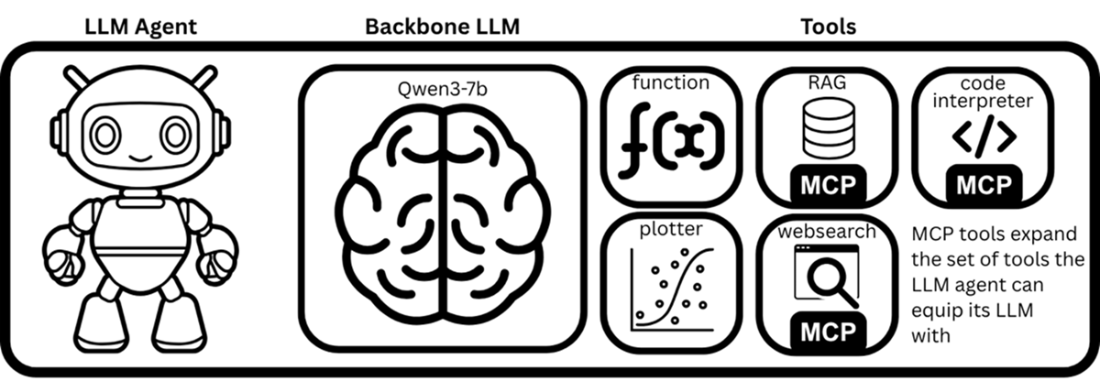
LLM agents utilize the planning capability of backbone LLMs to formulate initial plans for tasks, as well as to adapt current plans based on the results of past steps or actions taken towards task completion.
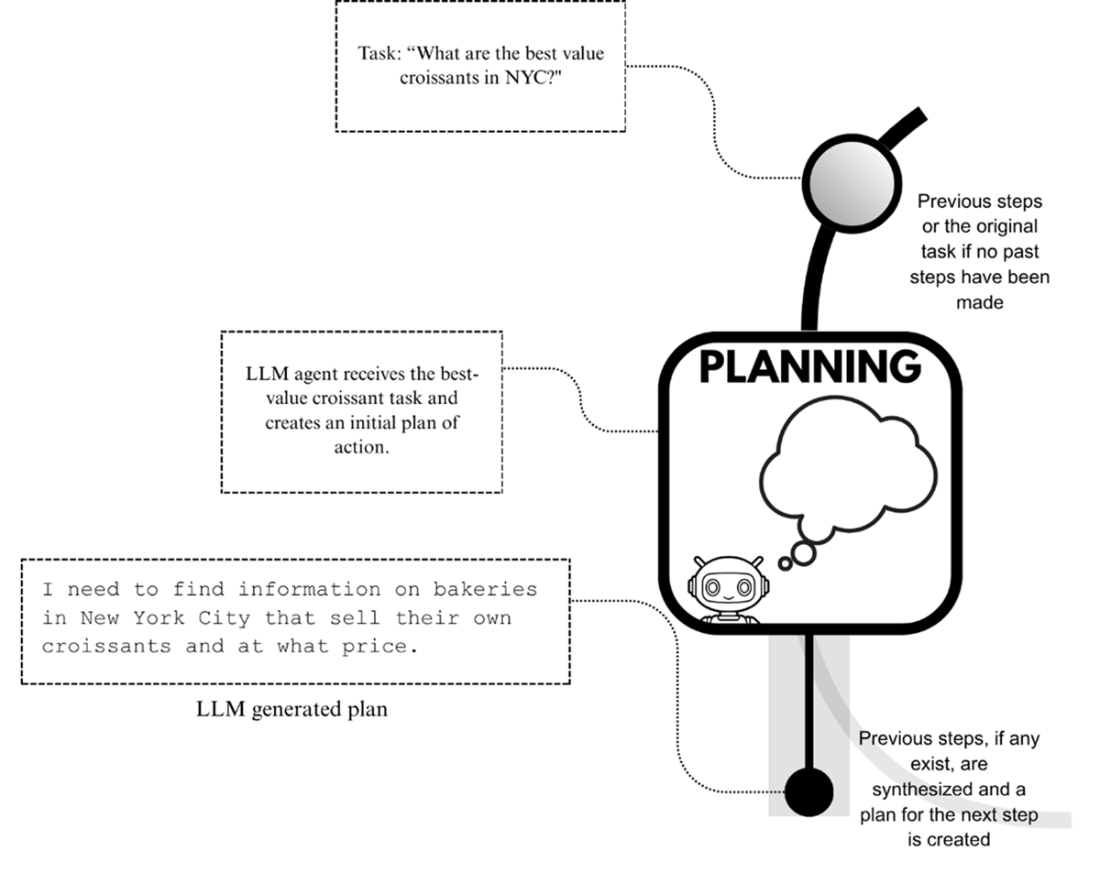
An illustration of the tool-equipping process, where a textual description of the tool that contains the tool’s name, description and its parameters is provided to the LLM agent.
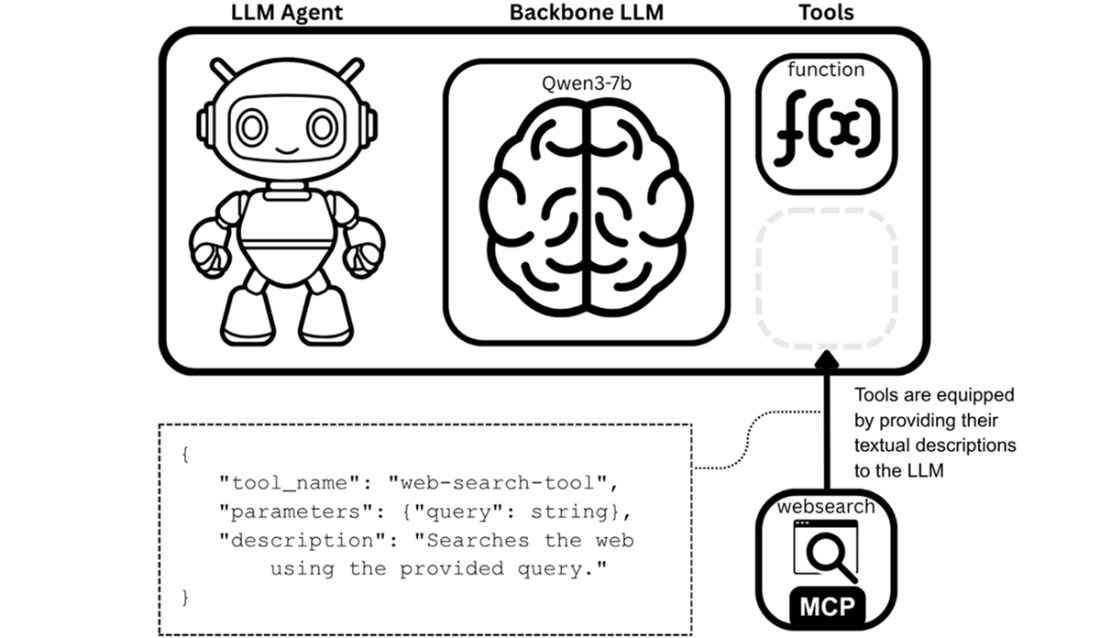
The tool-calling process, where any equipped tool can be used.
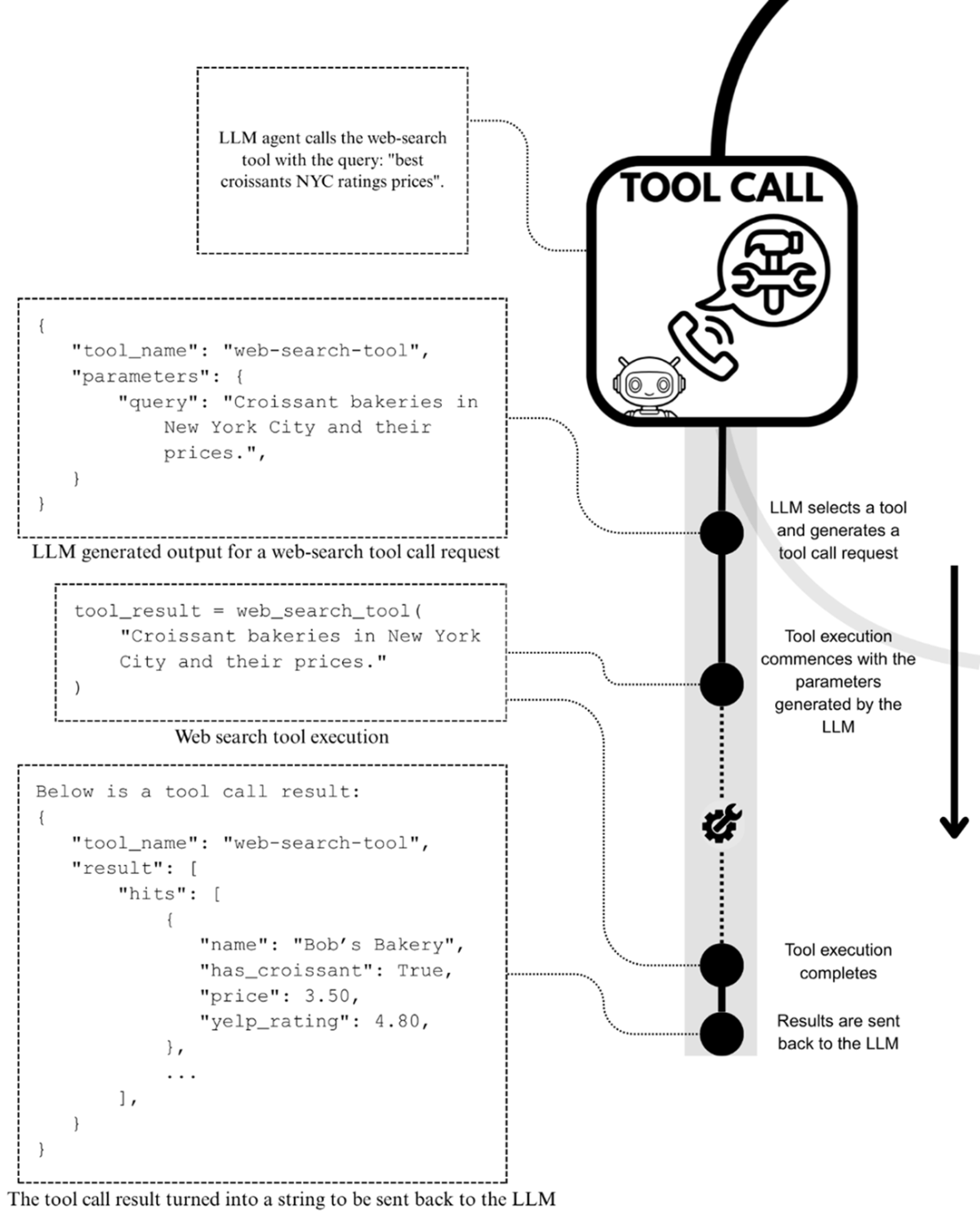
A mental model of an LLM agent performing a task through its processing loop, where tool calling and planning are used repeatedly. The task is executed through a series of sub-steps, a typical approach for performing tasks.
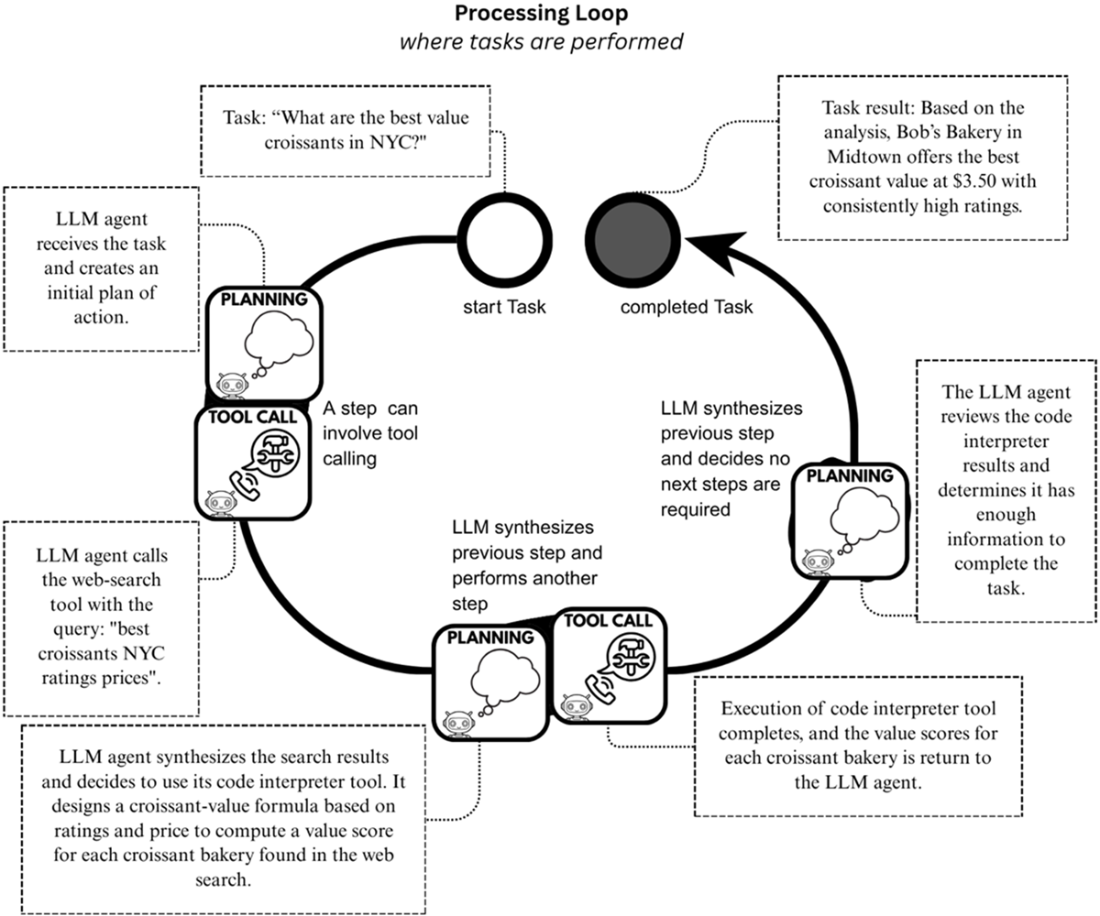
An LLM agent that has access to memory modules where it can store key information of task executions and load this back into its context for future tasks.
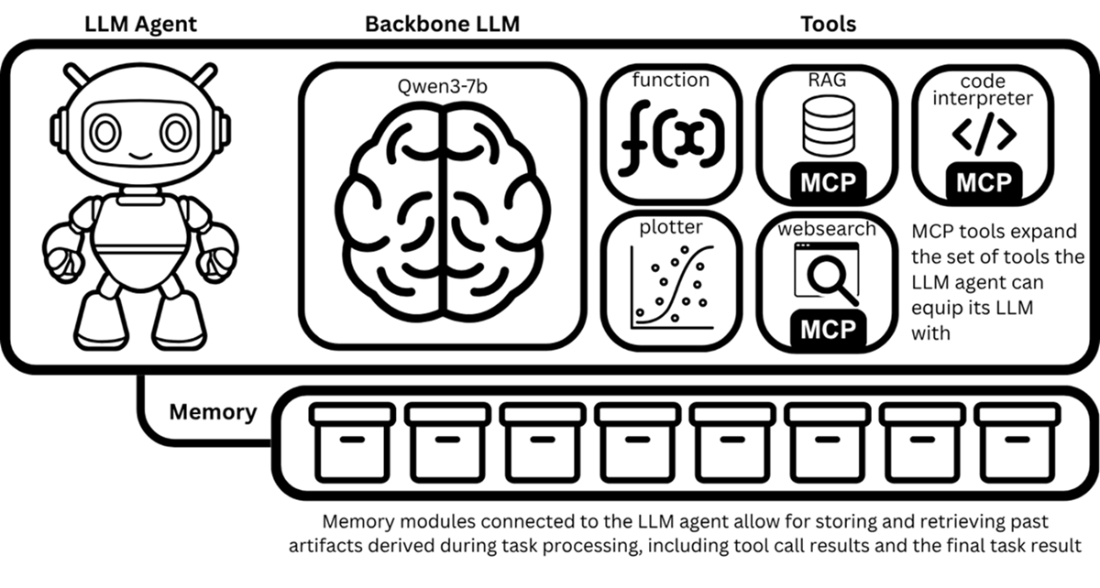
A mental model of the LLM agent processing loop that has memory modules for saving and loading important information obtained during task execution.
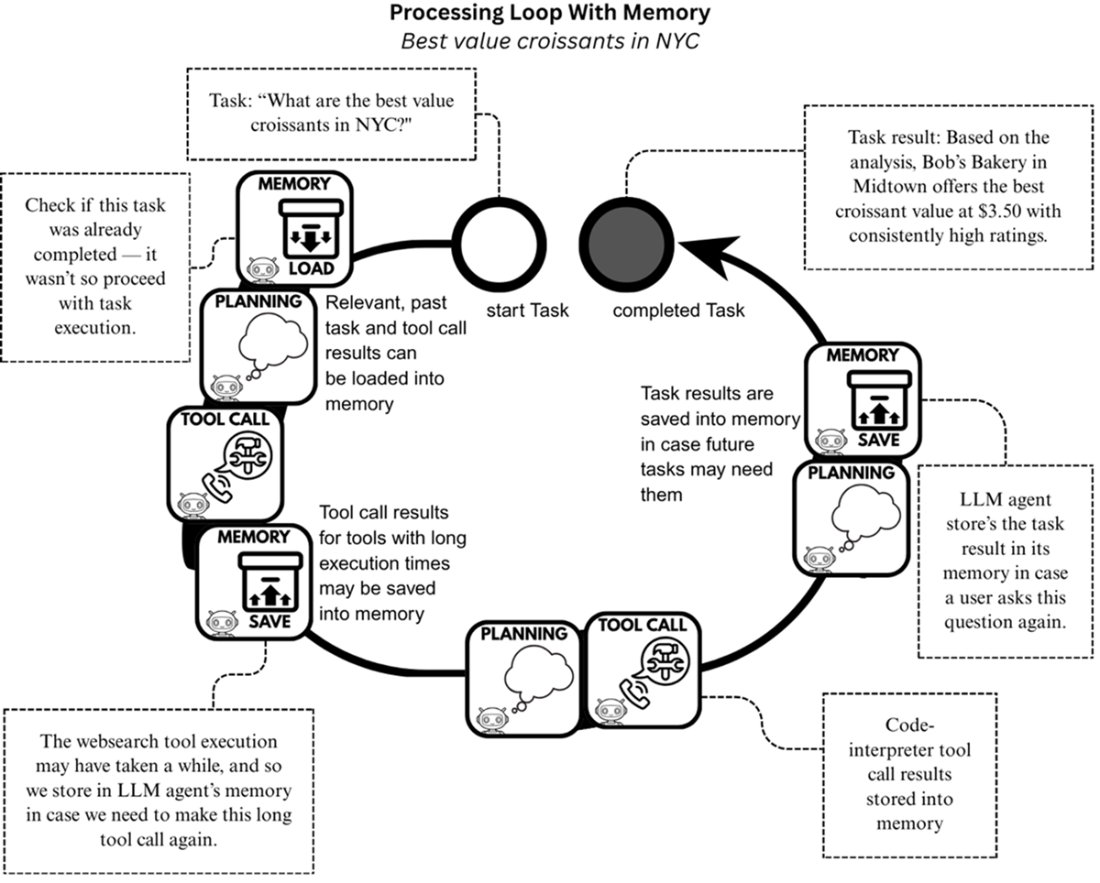
An LLM agent processing loop with access to human operators. The processing loop is effectively paused each time a human operator is required to provide input.
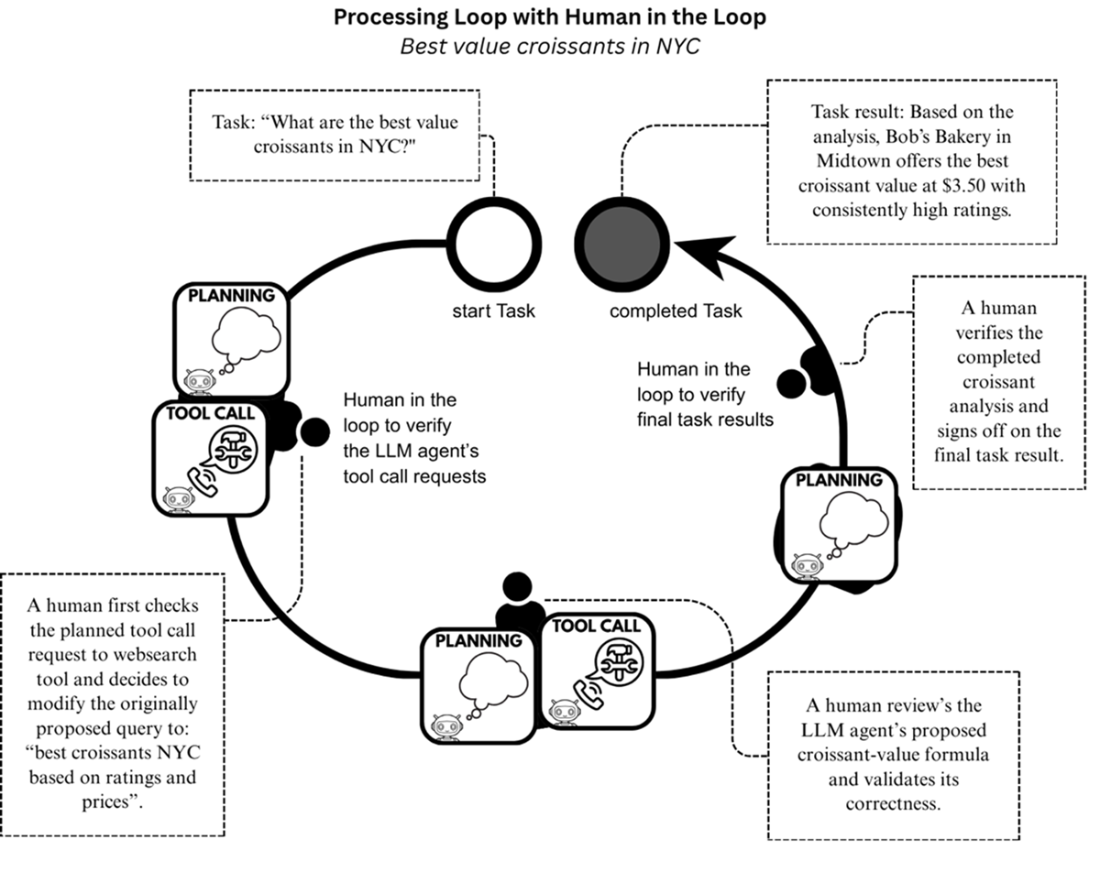
Multiple LLM agents collaborating to complete an overarching task. The outcomes of each LLM agent’s processing loop are combined to form the overall task result.
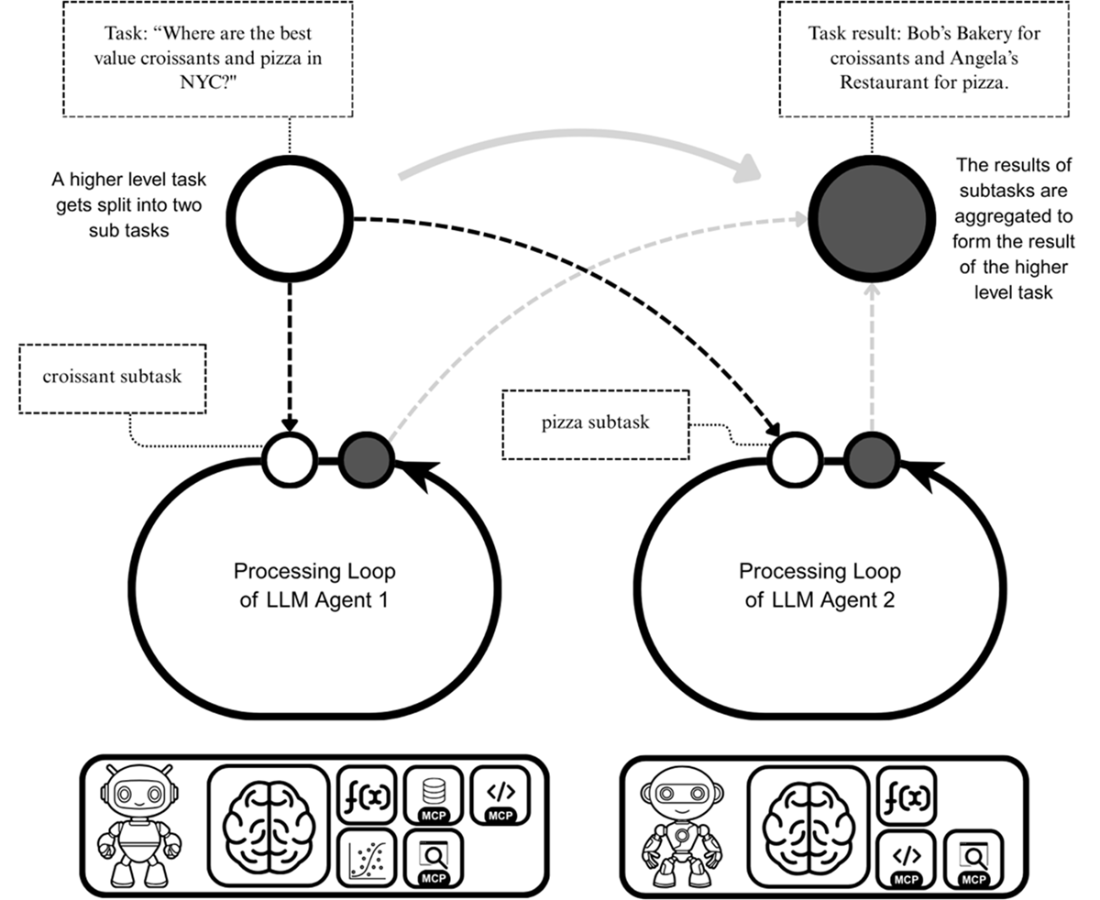
A first look at the llm-agents-from-scratch framework that we’ll build together.
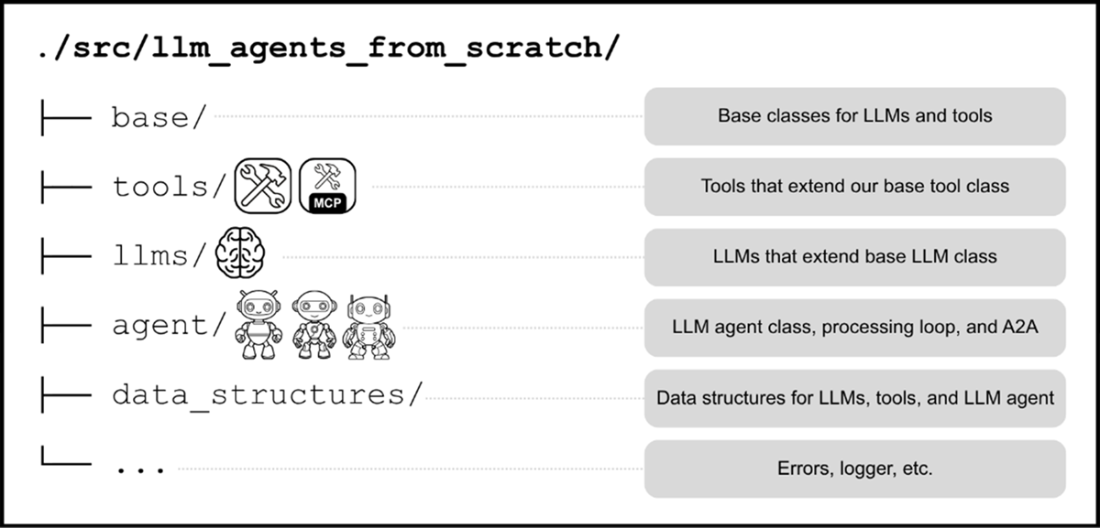
A simple UML class diagram that shows two classes from the llm-agents-from-scratch framework. The BaseTool class lives in the base module, while the ToolCallResult lives in the data_structures module. The attributes and methods of both classes are indicated in their respective class diagrams and the relation between them is also described.
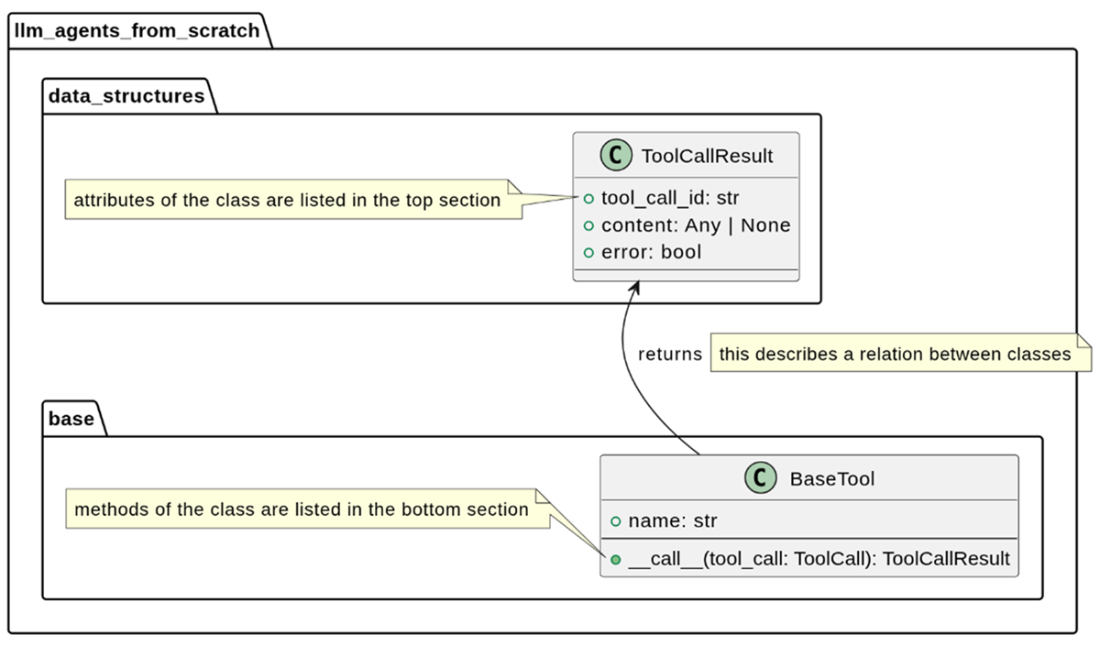
A UML sequence diagram that illustrates how the flow of a tool call. First, an LLM agent prepares a ToolCall object and invokes the BaseTool, which initiates the processing of the tool call. Once completed, the BaseTool class constructs a ToolCallResult which then gets sent back to the LLM agent.
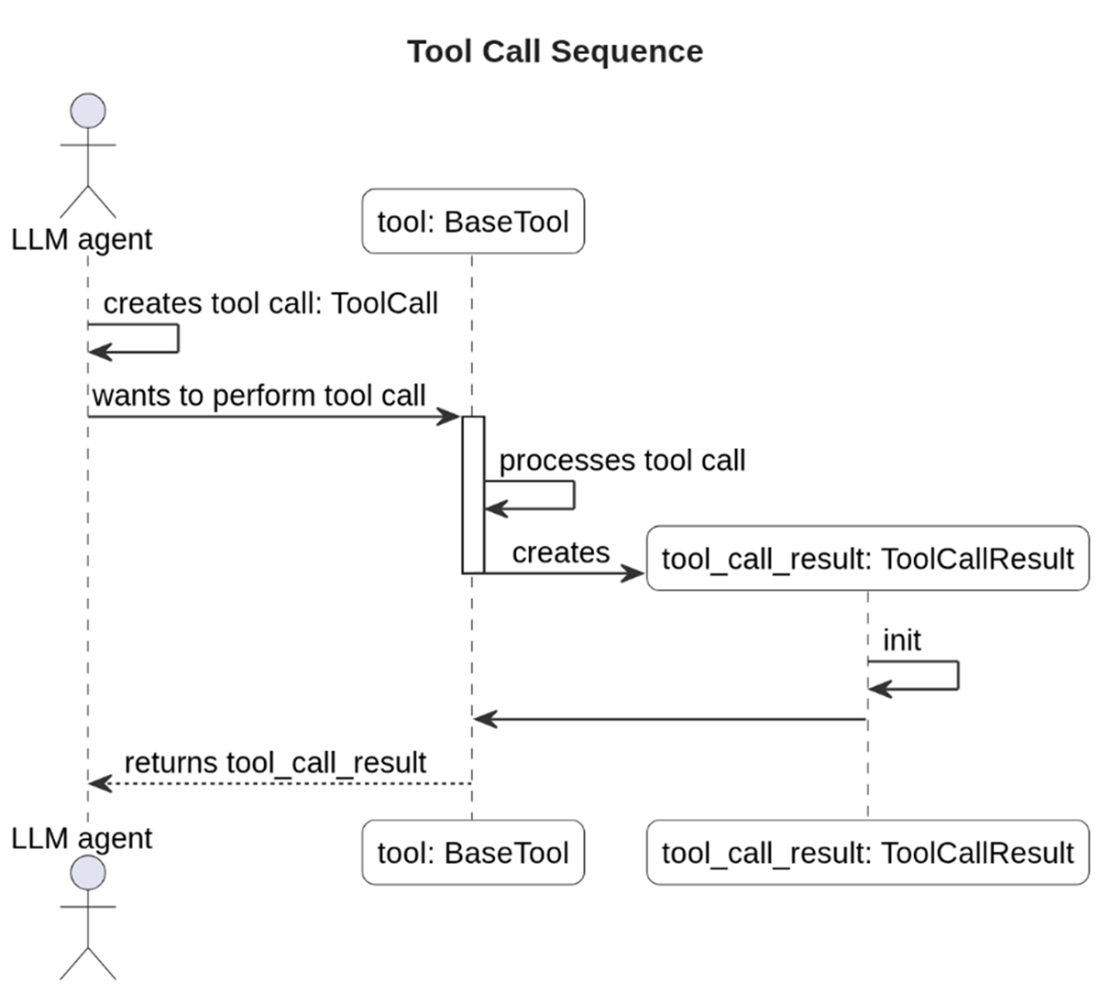
The build plan for our llm-agents-from-scratch framework. We will build this framework in four stages. In the first stage, we’ll implement the interfaces for tools and LLMs, as well as our LLM agent class. In the second stage, we’ll make our LLM agent MCP compatible so that MCP tools can be equipped to the backbone LLM. In stage three, we will implement the human-in-the-loop pattern and add memory modules to our LLM agent. And, in the fourth and final stage, we’ll incorporate A2A and other multi-agent coordination logic into our framework to enable building MAS.
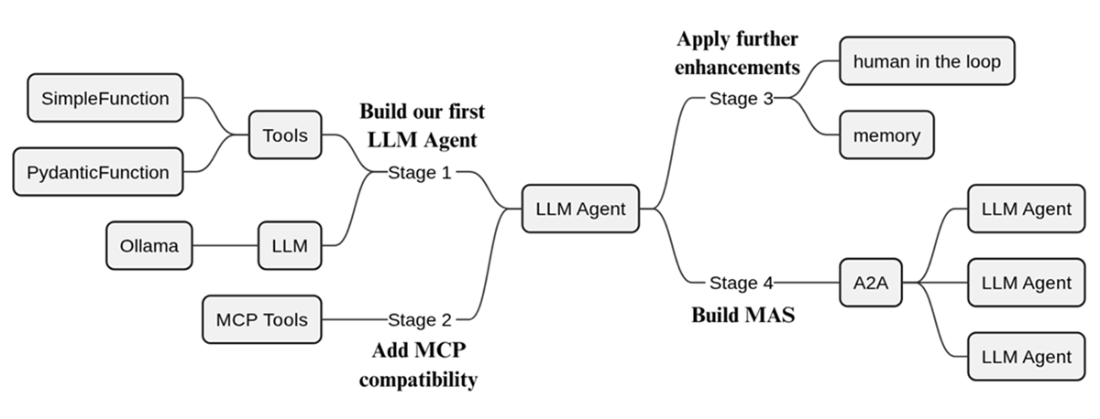
Summary
- LLMs have become very powerful text generators that have been applied successfully to tasks like text summarization, question-answering, and text classification, but they have a critical limitation in that they cannot act; they can only express an intent to act (such as making a tool call) through text. That’s where LLM agents come in to bring in the ability to carry out the intended actions.
- Applications for LLM agents are many, such as report generation, deep research, computer use and coding.
- With MAS, individual LLM agents collaborate to collectively perform tasks.
- Many applications for LLM agents can further benefit from MAS. In principle, MAS excel when complex tasks can be decomposed into smaller subtasks, where specialized LLM agents outperform general-purpose LLM agents.
- LLM agents are systems comprised of an LLM and tools that can act autonomously to perform tasks.
- LLM agents use a processing loop to execute tasks. Tool calling and planning capabilities are key components of that processing loop.
- Protocols like MCP and A2A have helped to create a vibrant LLM agent ecosystem that is powering the growth of LLM agents and their applications. MCP is a protocol developed by Anthropic that has paved the way for LLM agents to use third-party provided tools.
- A2A is a protocol developed by Google to standardize how agent-to-agent interactions are conducted in MAS.
- Building an LLM agent requires infrastructure elements like interfaces for LLMs, tools, and tasks.
- We’ll build LLM agents, MAS, and all the required infrastructure from scratch into a Python framework called llm-agents-from-scratch.
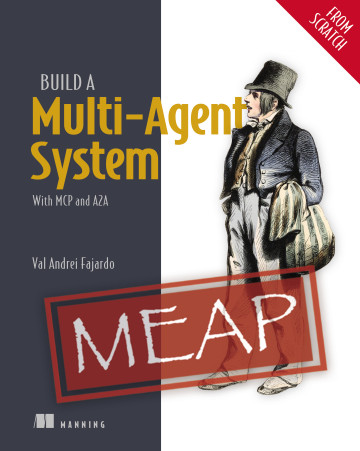 Build a Multi-Agent System (from Scratch) ebook for free
Build a Multi-Agent System (from Scratch) ebook for free